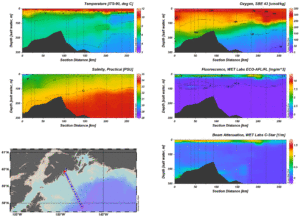Northern Gulf of Alaska LTER
Established in 2018 as one of the National Science Foundation‘s Long Term Ecological Research (LTER) sites, the Northern Gulf of Alaska (NGA) LTER program investigates the features, mechanisms, and processes that drive the production of the NGA ecosystem and foster its resilience.
Highly productive, the NGA supports a rich and diverse ecosystem sustaining one of the world’s largest commercial fisheries, as well as iconic species of seabirds and marine mammals. We seek to understand the capacity of the ecosystem’s ability to deal with climate change ‒ both long-term trends and changes in variability ‒ and to better understand what may affect its resilience.



